Best Dropshipping Home Decor Products to Elevate Your Sales!
With a global market valued at over $665 billion in previous years and a projected CAGR of 3.9% in 2025, it’s a sector that continues to grow and evolve. The statistics and trends indicate a dynamic industry with a strong demand for sustainable, personalized, and technologically integrated products.
To succeed in home decor dropshipping, selecting reliable suppliers is crucial, as curating a product range aligned with market trends and building a memorable brand. Marketing and customer service are critical pillars of success, ensuring you attract customers and keep them returning.
What is home decor products dropshipping?

Home decor product dropshipping is a business model in which entrepreneurs can sell customers a wide range of home decoration items without holding any inventory. Instead of purchasing and storing products, the retailer partners with a dropshipping supplier who stocks the products and handles the shipping process directly to the customers. It’s a cost-effective and low-risk way to enter the home decor market and tap into various trendy products to meet the demands of today’s interior design enthusiasts.
Why Dropshipping Home Decor is a Profitable Business Model?

Dropshipping home decor is a profitable business model for several compelling reasons:
- Low Initial Investment: You don’t need to invest heavily in purchasing inventory, warehousing, or managing stock. This reduces your upfront costs and financial risk.
- Broad Product Variety: The home decor market offers various products, from wall art and furniture to lighting and decorative accessories. This variety allows you to cater to diverse customer preferences and market trends.
- Trend Responsiveness: Home decor trends can change quickly, and dropshipping allows you to adapt to these shifts by rapidly adding or removing products from your online store.
- Scalability: As your business grows, you can grow without worrying about managing increased inventory or storage space. This flexibility enables you to seize new opportunities.
- Global Reach: Dropshipping allows you to sell to customers worldwide, opening up a global customer base without international shipping and storage complexities.
- Time Efficiency: Without the burden of order fulfillment, you can focus your time and efforts on marketing, customer service, and business strategy.
- Reduced Risk: Since you only purchase products when you’ve made a sale, you’re not left with unsold inventory, reducing financial risks associated with traditional retail.
- Testing New Markets: You can test new product ideas and markets with minimal risk, allowing you to discover what works best for your audience.
- Access to Quality Suppliers: Partnering with reliable and quality suppliers is crucial, and many established dropshipping suppliers offer competitive products and services.
- Lower Overhead Costs: Your business can operate with fewer fixed costs, such as warehousing, staffing, and inventory management.
- E-commerce Growth: The increasing popularity of online shopping and e-commerce platforms provides a ready market for home decor products.
- Margin Control: You have control over your pricing strategy, enabling you to set competitive prices and optimize profit margins.
While dropshipping offers significant advantages, it’s essential to conduct thorough market research, build a robust online presence, and provide excellent customer service to maximize the profitability of your home decor business. Additionally, finding reliable suppliers and staying updated on industry trends is vital to long-term success.
Best home decor Products for Dropshipping

The best home decor products for dropshipping can vary depending on market trends, customer preferences, and your niche. However, the following are some popular and timeless home decor products that often perform well in the dropshipping business:
- Wall Art and Prints: Posters, canvas prints, framed art, and wall decals are popular for adding character to homes.
- Cushion Covers and Throw Pillows: Decorative cushions in various colors, patterns, and textures are a simple way to update a room’s look.
- Vases and Flower Pots: Stylish vases and planters can enhance the aesthetic of any space.
- Rugs: Rugs and carpets are a functional addition to any room.
- Candles and Candle Holders: Candles, candle holders, and accessories create a warm and inviting atmosphere.
- Mirrors: Decorative mirrors can make a space feel larger and add elegance to the decor.
- Lighting Fixtures: Pendant lights, chandeliers, and table lamps can provide illumination and style.
- Furniture and Decorative Tables: Pieces like coffee tables, side tables, and accent chairs can be drop shipped.
- Bedding and Bed Linens: Bedspreads, duvet covers, and decorative bed linens are essential for bedroom decor.
- Clocks: Wall clocks come in various styles, from vintage to modern, and can be decorative and functional.
- Shelving and Wall Shelves: Floating and decorative shelving units can help with storage and decor.
- Decorative Accessories: Small items like figurines, sculptures, and decorative bowls can add a finishing touch to any space.
- Tableware and Kitchen Accessories: Placemats, coasters, and kitchen decor can enhance the dining and cooking experience.
- Curtains and Window Treatments: Curtains, blinds, and window accessories are essential for window decor.
- Seasonal Decor: Seasonal and holiday-themed decor products are in demand during specific times.
When selecting products for your home decor dropshipping business, consider your target audience, the current market trends, and niche. Additionally, it focuses on providing quality products and reliable suppliers to ensure customer satisfaction.
Here are key points, features, benefits, and examples for each of the office supplies products mentioned:
Wall Art and Prints:
- Key Points: Wall art includes paintings, prints, posters, and more.
- Features: Various sizes, styles, and subjects, including abstract, landscapes, and pop culture.
- Benefits: Enhances the aesthetics of a room, adds personality, and reflects the homeowner’s taste.
- Examples: Canvas art of famous paintings, abstract art prints, and movie poster prints.
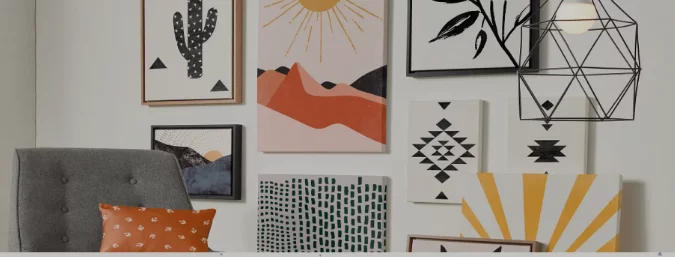
Cushion Covers and Throw Pillows:
- Key Points: Decorative cushion covers and throw pillows in various materials and designs.
- Features: Options for different textures, colors, and patterns to complement any decor.
- Benefits: Easily update a room’s look, add comfort, and create a cozy atmosphere.
- Examples: Velvet cushion covers in jewel tones bohemian patterned throw pillows.
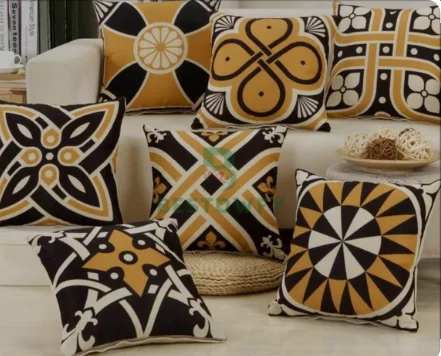
Vases and Flower Pots:
- Key Points: Decorative vases and flower pots for displaying fresh or artificial flowers.
- Features: Materials like ceramic, glass, or metal in various shapes and sizes.
- Benefits: Add a touch of nature to interior decor and elevate the beauty of a space.
- Examples: Geometric glass vases ceramic plant pots in pastel colors.
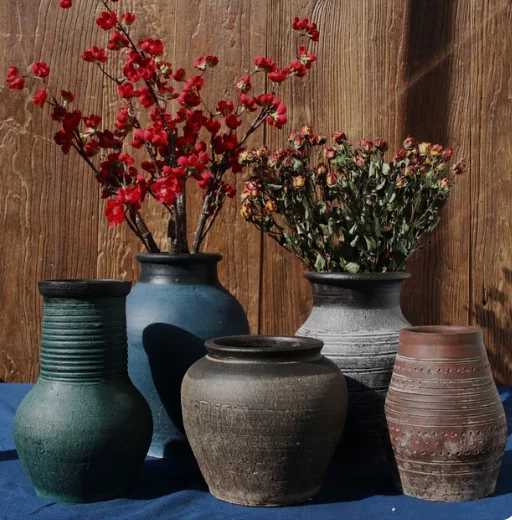
Rugs and Carpets:
- Key Points: Area rugs and carpets for enhancing the floor area of a room.
- Features: Various sizes, patterns, and materials such as wool, jute, and synthetic fibers.
- Benefits: Define spaces, provide warmth, and introduce color and texture.
- Examples: Bohemian-style area rugs geometric patterned carpets.

Candles and Candle Holders:
- Key Points: Decorative candles and holders for ambient lighting.
- Features: Candle sizes, shapes, and various candle holders and lanterns.
- Benefits: Create a cozy atmosphere, add scents, and serve as decor pieces.
- Examples: Scented soy candles in glass jars and Moroccan-style candle lanterns.

Mirrors:
- Key Points: Decorative mirrors in various sizes and styles.
- Features: Wall-mounted, freestanding, and framed mirrors with diverse designs.
- Benefits: Make rooms appear larger, reflect light, and add an elegant touch to the decor.
- Examples: Sunburst wall mirrors vintage-inspired vanity mirrors.

Lighting Fixtures:
- Key Points: Pendant lights, chandeliers, and table lamps for illumination and decor.
- Features: Different styles, sizes, and materials like metal, glass, and fabric lampshades.
- Benefits: Enhance ambiance, provide functional lighting, and make a statement.
- Examples: Industrial-style pendant lights, crystal chandeliers, and mid-century table lamps.
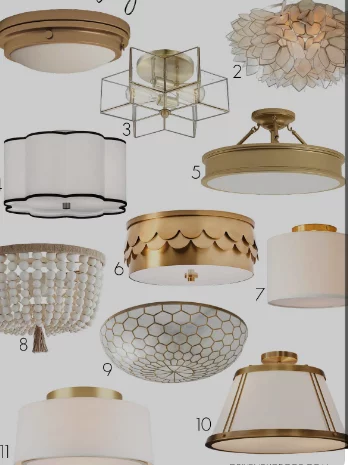
Furniture and Decorative Tables:
- Key Points: Furniture items like coffee tables, side tables, and accent chairs.
- Features: Varying materials, styles, and sizes for different rooms and purposes.
- Benefits: Create functional spaces, enhance comfort, and complement decor themes.
- Examples: Mid-century modern coffee tables, boho-chic side tables, and velvet accent chairs.
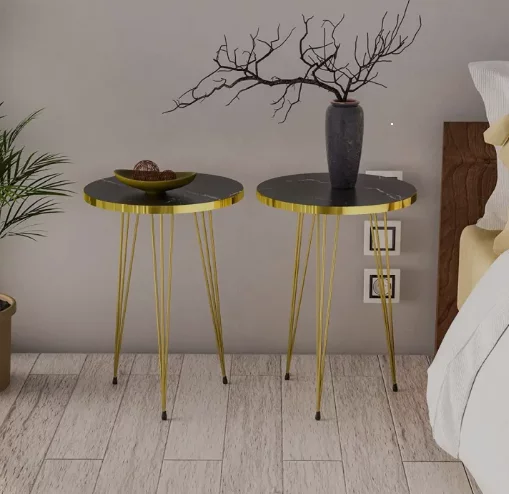
Bedding and Bed Linens:
- Key Points: Bedspreads, duvet covers, and decorative bed linens.
- Features: Various patterns and materials like cotton, linen, and silk.
- Benefits: Transform bedrooms, provide comfort, and express personal style.
- Examples: Floral-print duvet covers, linen bedspreads, and embroidered pillowcases.
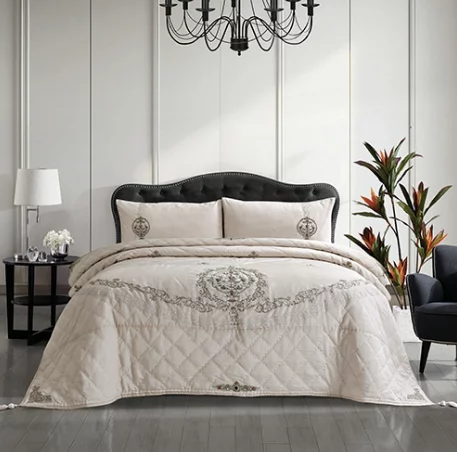
Clocks:
- Key Points: Wall clocks in various designs, sizes, and materials.
- Features: Analog and digital options, vintage and modern styles.
- Benefits: Keep track of time, add a decorative element, and enhance the room decor.
- Examples: Oversized rustic wall clocks minimalist wooden desk clocks.

Shelving and Wall Shelves:
- Key Points: Floating shelves and decorative shelving units for storage and decor.
- Features: Various sizes, shapes, and materials like wood, metal, and glass.
- Benefits: Provide storage solutions, display decor items, and save space.
- Examples: Floating wooden shelves and geometric metal wall shelves.
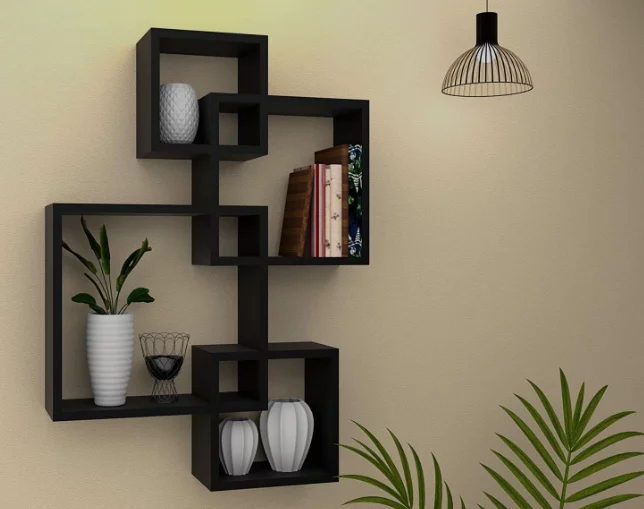
Decorative Accessories:
- Key Points: Small decor items like figurines, sculptures, and decorative bowls.
- Features: Various themes, materials, and sizes to match different decor styles.
- Benefits: Add character, complete room decor, and showcase personal tastes.
- Examples: Ceramic animal figurines, abstract sculptures, and glass decorative bowls.

Tableware and Kitchen Accessories:
- Key Points: Placemats, coasters, and kitchen decor for dining and cooking areas.
- Features: Different materials, patterns, and themes for table settings.
- Benefits: Elevate dining experiences, protect surfaces, and enhance kitchen aesthetics.
- Examples: Bamboo placemats, marble coasters, and ceramic kitchen canisters.
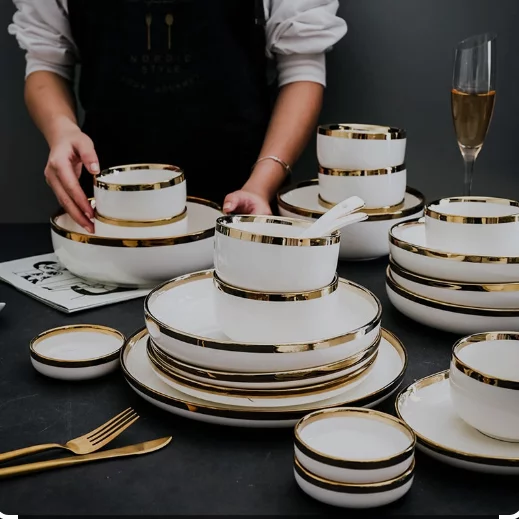
Curtains and Window Treatments:
- Key Points: Curtains, blinds, and window accessories for window decor.
- Features: Diverse materials, patterns, and lengths for privacy and style.
- Benefits: Enhance natural lighting, add privacy, and complete room decor.
- Examples: Sheer linen curtains, blackout curtains, and bamboo blinds.

Seasonal Decor:
- Key Points: Seasonal and holiday-themed decor products for festive occasions.
- Features: Products for various holidays, seasons, and special occasions.
- Benefits: Create a festive atmosphere, celebrate special events, and add variety to decor.
- Examples: Christmas tree ornaments, Halloween-themed decor, and Easter tableware.

When dropshipping these home decor products, it’s essential to consider your target audience’s preferences and current market trends. Offering a diverse selection of high-quality and stylish items can help attract and retain customers in the competitive home decor market. Excellent product descriptions, appealing visuals, and competitive pricing are crucial for your online store’s success.
Top Home Decor Products Suppliers
Finding reliable home decor product suppliers is crucial for the success of your dropshipping business. While there are many suppliers available, here are some popular and reputable options to consider:
- AliExpress: AliExpress is a vast online marketplace with numerous home decor suppliers offering a wide range of products. It’s a popular choice for many dropshippers due to its extensive product selection.
- SaleHoo: SaleHoo is a directory of wholesalers and dropshipping suppliers, including those in the home decor niche. They provide vetted and verified suppliers to ensure reliability.
- Worldwide Brands: Worldwide Brands is a well-known certified wholesalers and dropshippers directory. They have an extensive list of suppliers that offer home decor products.
- DHgate: DHgate is another online marketplace that connects you with various suppliers in the home decor category. It offers a variety of products.
- Wholesale Central: Wholesale Central is a directory of wholesale suppliers across different industries, including home decor. You can find suppliers offering everything from wall art to furniture.
- Doba: Doba is a dropshipping platform that provides access to an extensive catalog of home decor products from various suppliers. It offers a simplified process for managing your inventory.
- Modalyst: Modalyst is a dropshipping platform that connects you with suppliers specializing in fashion and home decor products. They offer a range of products and have a user-friendly interface.
- Spocket: While initially focused on fashion, Spocket has expanded to include home decor products. It’s a great option if you’re looking for suppliers offering trendy and high-quality items.
- SaleSource: SaleSource is a dropshipping tool that can help you find reliable home decor suppliers. It provides analytics and insights to aid your product selection.
- Printful: If you’re interested in custom-printed home decor products like canvas prints or pillows, Printful offers a range of customizable items.
- Spoonflower: For custom fabric and textile products like curtains and bedding, Spoonflower is a popular choice. They offer a range of designs and the option for customization.
When evaluating potential suppliers, consider product quality, shipping times, pricing, and customer service. Many suppliers offer product samples, so you can assess the quality before deciding. Additionally, check if the supplier supports dropshipping and integrates with your chosen e-commerce platform. Always read reviews and gather as much information as possible to select the best suppliers for your home decor dropshipping business.
Statistics on the Profitability of the Home Decor Business
The profitability of the home decor business is influenced by various factors, and the statistics you provided offer insight into the financial aspects of this industry. Here’s a breakdown of the profitability statistics:
- Market Size and Growth: The global home decor market was valued at USD 665,917.50 million in 2021 and is predicted to reach USD 939,637.2 million by 2030. so a compound annual growth rate (CAGR) of 3.9% during the forecast period (2022-2030). This growth indicates the market’s potential for generating profits.
- Average Profit Margin: Home decor stores typically have profit margins that range between 30% to 40%. This range suggests that businesses in this industry can enjoy healthy investment returns.
- Industry Revenue: The home decor is one of the most profitable in the United States, generating approximately $100 billion annually. Out of this, $80 billion comes from sales at major retailers like Home Depot and Lowe’s. This demonstrates the significant revenue potential in the home decor sector, especially for large retail chains.
These statistics illustrate the solid financial potential of the home decor business, with substantial market size and consistent growth. The healthy profit margins further emphasize the attractiveness of this industry to entrepreneurs and investors. However, it’s essential to note that individual business success may vary based on location, product selection, marketing strategies, and operational efficiency.
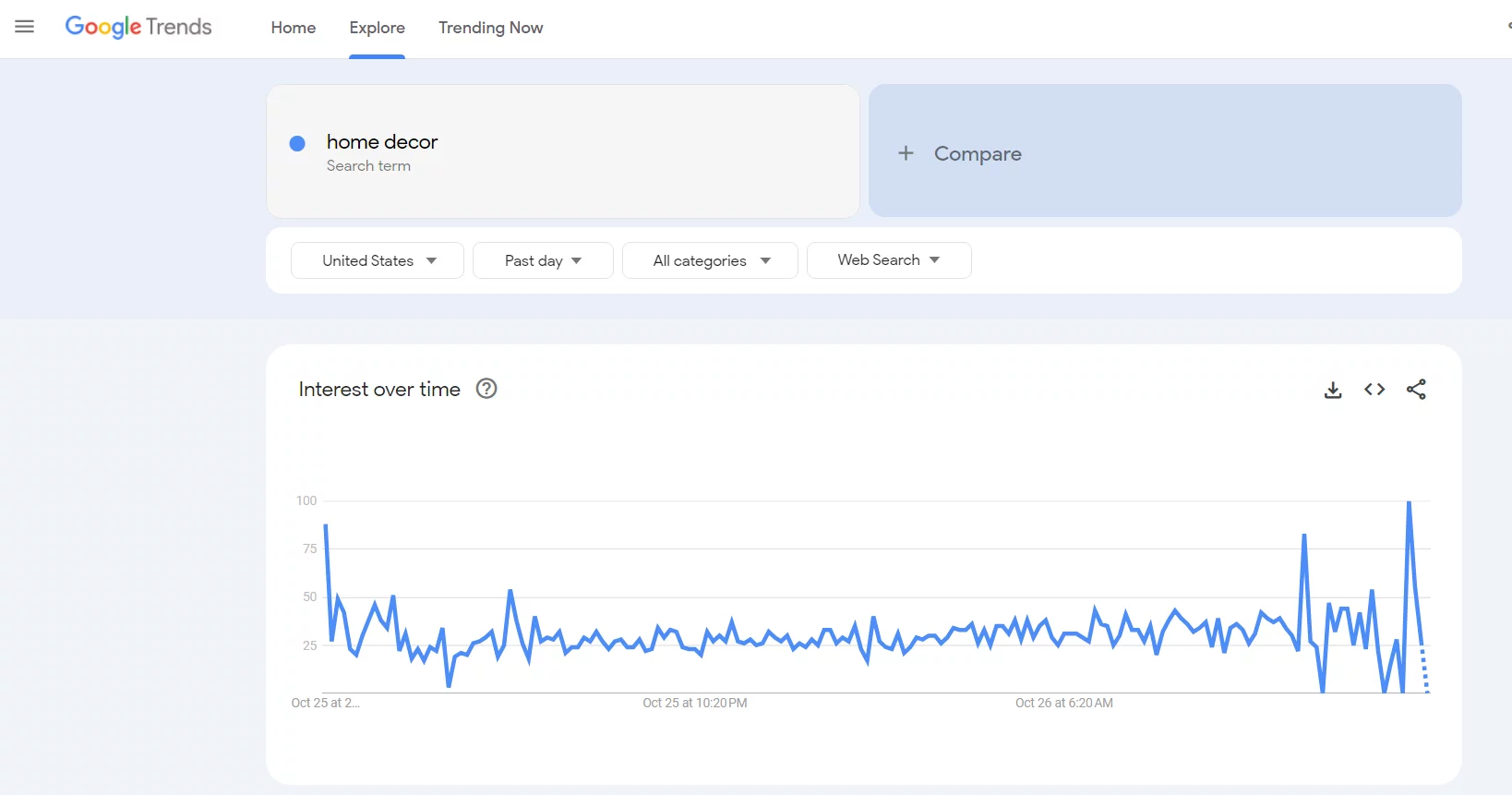
Trend Analysis of the Home Decor Business:
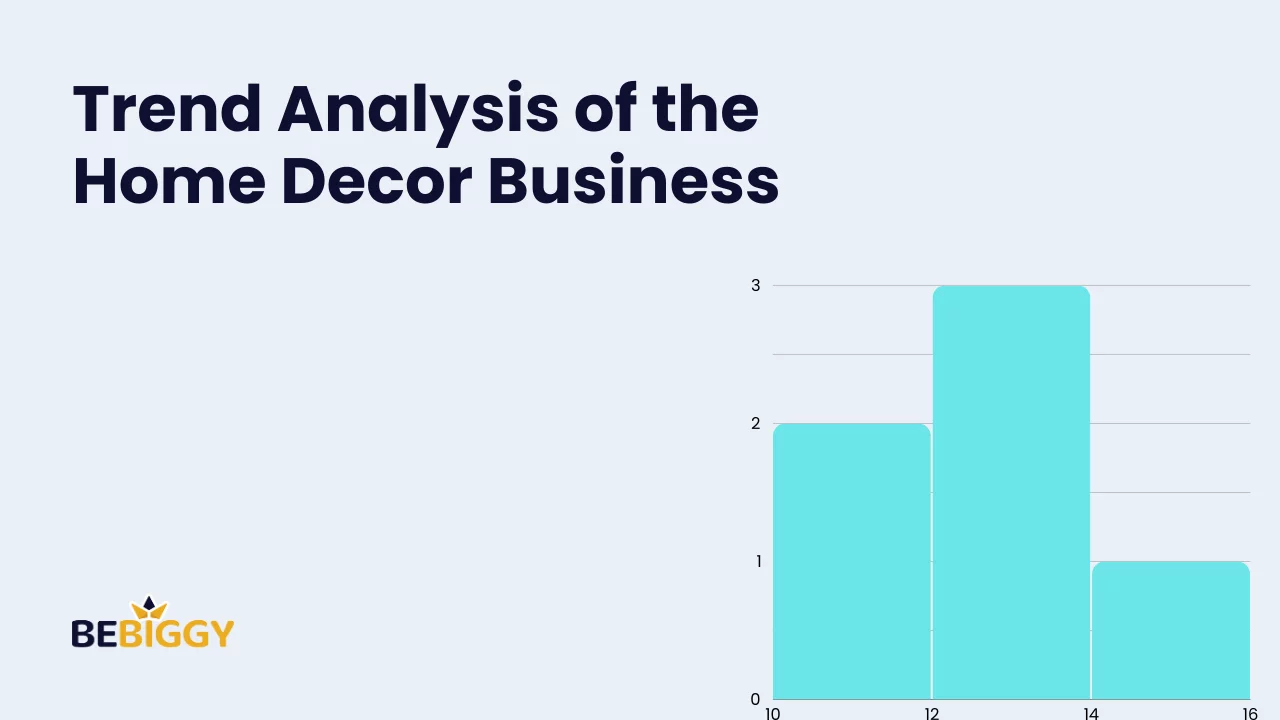
- Steady Market Growth: The home decor industry has shown consistent growth over the years. The market is valued at USD 665,917.50 million in 2024, and it is projected to reach USD 939,637.2 million by 2030, with a CAGR of 3.9% during the forecast period (2025-2030). This steady growth suggests a sustained demand for home decor products, likely driven by changing consumer preferences, urbanization, and a focus on interior aesthetics.
- E-commerce and Digital Transformation: The digitalization of retail has had a significant impact on the home decor industry. E-commerce platforms and online marketplaces have become increasingly popular, offering consumers a convenient way to shop for home decor products. Retailers are investing in enhancing their online presence and providing a seamless shopping experience, which has become a notable trend in the industry.
- Sustainability and Eco-Friendly Products: Home decor has a growing trend toward sustainability and eco-friendliness. Consumers are more interested in products made from sustainable materials, recycled items, and energy-efficient home decor solutions. Businesses are responding by incorporating eco-friendly options into their product offerings.
- Personalization and Customization: Home decor trends are shifting towards personalization. Customers seek unique and customized solutions that reflect their styles and preferences. Businesses are responding by offering made-to-order and customizable decor items to cater to this demand.
- Influence of Social Media: Social media platforms play a significant role in influencing home decor trends. Consumers often discover new ideas and products through these platforms, creating a demand for trendy and aesthetically pleasing items. Businesses are increasingly leveraging social media for marketing and design inspiration.
- Influence of Globalization: The home decor industry is influenced by global design trends. The ease of international trade and the availability of products worldwide have led to diverse design influences. This globalization has resulted in a mix of traditional and contemporary styles, providing consumers with various choices.
- Smart Home Integration: With smart home technology, there is a growing trend in integrating technology into home decor. Bright lighting, automated window treatments, and other connected devices are becoming more prevalent, providing functionality and aesthetic appeal.
- Challenges and Opportunities: While the home decor industry offers opportunities for profitability, it also faces challenges related to supply chain disruptions, fluctuating raw material costs, and market competition. Staying updated on industry trends, managing inventory effectively, and meeting sustainability demands present challenges and opportunities for businesses in this sector.
The home decor business is poised for continued growth, driven by consumer preferences, technological advancements, and a focus on sustainability. Adapting to these trends and leveraging digital tools for marketing and sales will be essential for businesses looking to thrive in this dynamic industry.
Trends and Highlights in the Home Decor Business:
- Sustainability and Eco-Friendly Products: Consumers increasingly prioritize sustainability and eco-friendliness in their home decor choices. Businesses are responding by offering products made from sustainable materials, recycled items, and energy-efficient solutions.
- Personalization and Customization: The demand for personalized and customized home decor items is rising. Consumers seek unique solutions that reflect their styles and preferences, prompting businesses to offer made-to-order and customizable products.
- Digital Transformation and E-commerce: The digitalization of retail has profoundly impacted the home decor industry. E-commerce platforms and online marketplaces are gaining popularity, providing a convenient shopping experience. Retailers are investing in enhancing their online presence.
- Influence of Social Media: Social media platforms play a significant role in shaping home decor trends. Consumers discover new ideas and products through platforms like Instagram and Pinterest, influencing their buying decisions. Businesses capitalize on this trend by using social media for marketing and design inspiration.
- Global Design Influences: Global design trends increasingly influence The home decor industry. With international trade and access to products worldwide, consumers have diverse design influences to choose from. This globalization has led to a mix of traditional and contemporary styles.
- Smart Home Integration: Smart home technology is integral to home decor. Consumers are embracing bright lighting, automated window treatments, and other connected devices that provide functionality and aesthetic appeal.
- Market Growth: The home decor market has shown consistent growth, with a projected CAGR of 3.9% from 2022 to 2030, reaching USD 939,637.2 million. This steady growth underscores the sustained demand for home decor products.
- Profit Margins: Home decor stores typically enjoy healthy profit margins, ranging from 30% to 40%. This makes the industry attractive for entrepreneurs and investors seeking a good return on investment.
- Influence of Home Improvement Retailers: Major retailers like Home Depot and Lowe’s contribute significantly to the industry, with sales accounting for a substantial portion of the $100 billion annual revenue in the United States.
- Challenges and Opportunities: The industry faces supply chain disruptions, fluctuating raw material costs, and market competition.
The home decor business is evolving with a strong emphasis on sustainability, personalization, and technology integration. The influence of social media and the globalization of design trends continue to shape consumer preferences. With steady market growth and attractive profit margins, the home decor industry offers opportunities for established businesses and new entrants to thrive in a dynamic and evolving market.
A Step-by-Step Guide to Getting Started in the Home Decor Business

Here’s a step-by-step guide to help you get started in the home decor business:
- Market Research and Niche Selection:
- Identify your target market and the specific niche within the home decor industry that you want to focus on (e.g., modern, vintage, eco-friendly, luxury, etc.).
- Analyze your competitors to understand what products are in demand and how they market their business.
- Business Plan:
- Create a business plan that outlines your business goals, budget, marketing strategy, and growth projections.
- Legal Structure and Registration:
- Choose a structure for your business.
- Register your business and obtain any required licenses
- Supplier Selection:
- Research and establish relationships with reputable home decor suppliers or wholesalers. Consider local suppliers overseas manufacturers, or use dropshipping suppliers to minimize inventory costs.
- Product Selection:
- Carefully curate a home decor product selection that aligns with your chosen niche and customer preferences.
- Branding and E-commerce Setup:
- Create a memorable brand name, logo, and brand identity that reflects your style and values.
- Set up an e-commerce website using platforms like Shopify, WooCommerce, or Etsy. Ensure your website is user-friendly.
- Inventory and Stock Management:
- If you carry inventory, establish an organized system for tracking stock-level orders and reordering products when necessary.
- Pricing and Profit Margin Strategy:
- Determine your pricing strategy, considering product cost, shipping, and desired profit margin.
- Marketing and Promotion:
- Develop a plan including social media, email, and paid advertising.
- Create an engaging and informative blog or content on your website to attract and educate potential customers about home decor trends and styling.
- Customer Service and Support:
- Set up efficient customer service channels to address inquiries and provide excellent customer support.
- Shipping and Fulfillment:
- Choose reliable shipping and fulfillment methods, whether you handle shipping in-house or use a third-party fulfillment service.
- Website Optimization:
- Optimize your website for search engines to improve its visibility in search results.
- Quality Assurance:
- Ensure that your products meet standards and conduct quality checks as needed.
- Financial Management:
- Keep accurate records and monitor your expenses, sales, and profits regularly.
- Scaling and Growth:
- Continuously assess your business’s performance, seek growth opportunities, and adapt to changing market trends.
- Customer Feedback:
- Encourage and collect customer feedback to improve and enhance their shopping experience.
- Legal and Compliance:
Stay informed about relevant laws and regulations, including product safety standards and copyright issues in the home decor industry.
Starting a home decor business can be rewarding, but success often requires dedication, creativity, and ongoing adaptation to changing market preferences. You can build a thriving home decor business by following these steps and staying attuned to industry trends.
Is Dropshipping Home Decor Worth it?

Whether the dropshipping home decor is worth it depends on your business goals, strategy, and how well you execute your plan.
Here are some factors to consider when evaluating the worthiness of dropshipping in the home decor industry:
Advantages:
- Low Initial Investment: Dropshipping allows you to start with minimal upfront costs since you don’t need to purchase inventory or manage a warehouse.
- Low Overhead Costs: You can run a lean operation with reduced overhead costs, such as storage, staff, and logistics.
- Wide Product Variety: The home decor industry offers a range of products, allowing you to cater to various customer preferences and trends.
- Scalability: Dropshipping is flexible and can be scaled up as your business grows without concerns about managing increased inventory.
- Testing New Markets: You can quickly test new products or markets with minimal risk to discover what works best for your audience.
Challenges:
- Profit Margins: Dropshipping typically comes with lower profit margins than other business models since you’re buying products at retail prices.
- Supplier Dependence: You rely on your suppliers to handle inventory and shipping, so choosing reliable and efficient suppliers is crucial.
- Competition: The home decor market, with numerous online sellers and established brands, can be highly competitive.
- Customer Service: Ensuring quality customer service can be challenging when you have limited control over shipping and fulfillment.
- Market Saturation: Some niches within home decor may need to be more saturated, making it more challenging to stand out.
- Brand Building: When reselling products from suppliers, building a unique brand identity can be more challenging.
How to make it successful:
Whether dropshipping in the home decor industry is worth it depends on your ability to differentiate your business, select quality products, and effectively market your brand. To make it successful, you should:
- Research your niche thoroughly to understand customer needs and preferences.
- Choose reliable and reputable suppliers to ensure product quality and efficient shipping.
- Invest in a well-designed e-commerce website and effective marketing strategies.
- Stay updated on trends and adapt product selection accordingly.
- Provide customer service to build trust and a loyal customer base.
Success in dropshipping home decor is attainable but requires careful planning, ongoing dedication, and adaptability. Evaluating cons in the context of your specific business objectives and capabilities is essential before deciding.
Why Dropship Home Decor Products?

Dropshipping home decor products offers several advantages, making it an attractive business model for entrepreneurs. Here are some reasons why dropshipping home decor products can be a compelling choice:
- Low Initial Investment: You don’t need to purchase inventory, storage space, or warehousing. This significantly reduces your upfront costs and financial risk.
- Minimal Overhead Costs: You can operate a home decor dropshipping business with fewer overhead expenses, such as staff, warehousing, and shipping equipment.
- Diverse Product Range: The home decor industry offers a variety of products, allowing you to cater to different tastes and trends without the constraints of holding inventory.
- Flexibility: Dropshipping is a flexible business that allows you to adapt to changing market demands by quickly adding or removing products from your online store.
- Global Reach: You can reach a global customer base without international shipping and storage complexities. This expands your market and potential customer base.
- Low-Risk Approach: Since you only purchase products when you’ve made a sale, you’re not left with unsold inventory. This reduces the financial risk associated with traditional retail.
- Focus on Marketing and Customer Service: With order fulfillment outsourced to suppliers, you can concentrate on marketing, building your brand, and providing exceptional customer service.
- Testing New Markets: Dropshipping allows you to experiment with new products and markets with minimal risk, enabling you to discover what works best for your audience.
- E-commerce Growth: The increasing popularity of online shopping and e-commerce platforms provides a ready market for home decor products.
- Margin Control: You have control over your pricing strategy, allowing you to set competitive prices and optimize profit margins.
While dropshipping home decor products has numerous advantages, it’s crucial to conduct thorough market research, select reliable suppliers, and invest in branding and marketing to stand out in a competitive market. Like any business model, success depends on adapting to changing trends, providing customer value, and effectively managing your operations.
FAQs for Best Dropshipping Home Decor Products to Sell

What is dropshipping for home decor products?
Dropshipping for home decor is a business model where entrepreneurs can sell various home decoration items without holding inventory. Instead, you partner with suppliers who stock and ship the products directly to customers, allowing you to focus on marketing and customer service.
Why is dropshipping home decor products a profitable business model?
Dropshipping is profitable due to its low initial investment, broad product variety, ability to adapt to market trends, scalability, global reach, and low-risk approach. It allows entrepreneurs to enter the home decor market and respond to changing consumer preferences with minimal financial risk.
What are the advantages of dropshipping home decor products?
Advantages include low upfront costs, low overhead expenses, a wide range of products, flexibility to adapt to trends, scalability, and the ability to reach a global customer base. It’s also a low-risk approach to starting a business.
What are the challenges of dropshipping home decor products?
Challenges can include lower profit margins compared to other business models, reliance on suppliers for inventory and shipping, competition in the home decor market, excellent customer service, and the need to build a unique brand identity.
Is dropshipping home decor products worth it?
The worthiness of dropshipping in the home decor industry depends on your business strategy, execution, and market research. It can be profitable if you differentiate your business, choose quality products, and effectively market your brand. Success requires dedication and adaptability to changing market trends.
Conclusion
In the world of entrepreneurship, the home decor industry beckons with its promise of both beauty and profit. The appeal of creating enchanting spaces while enjoying a healthy return on investment is undeniable. And the dropshipping model provides an accessible pathway into this thriving market.
The journey into the world of home decor blends aesthetics with entrepreneurship. It’s an opportunity to adorn homes, enrich lives, and embark on a rewarding business venture. As you embark on this path, remember that with the right strategy, dedication, and a keen eye for design, your home decor business can flourish, turning every house into a work of art and every venture into a masterpiece of success.

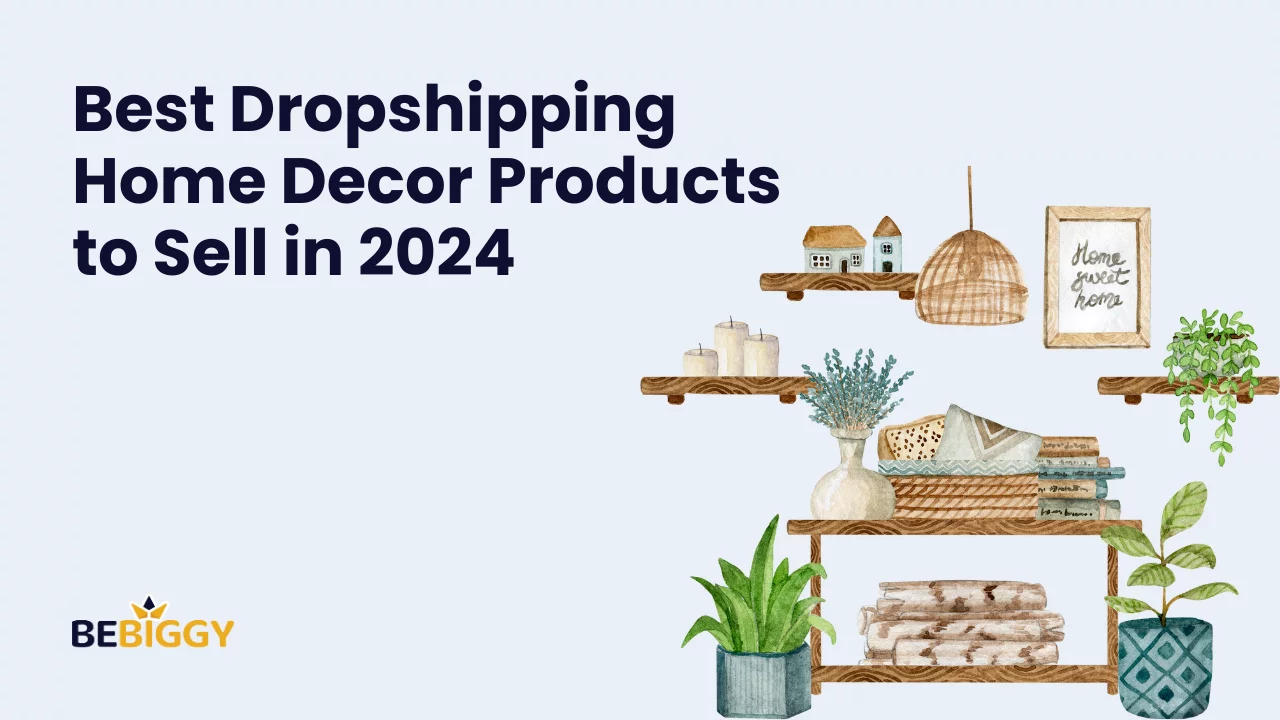






 What Is Shopify Dropshipping and How Does It Work?
What Is Shopify Dropshipping and How Does It Work?  Shopify Dropshipping: What You Need to Know Before Buying a Business?
Shopify Dropshipping: What You Need to Know Before Buying a Business?  How to Dropship on Shopify: Step-by-Step Guide
How to Dropship on Shopify: Step-by-Step Guide  Guide to Finding Reliable Shopify Dropshipping Suppliers [100% Success]
Guide to Finding Reliable Shopify Dropshipping Suppliers [100% Success]